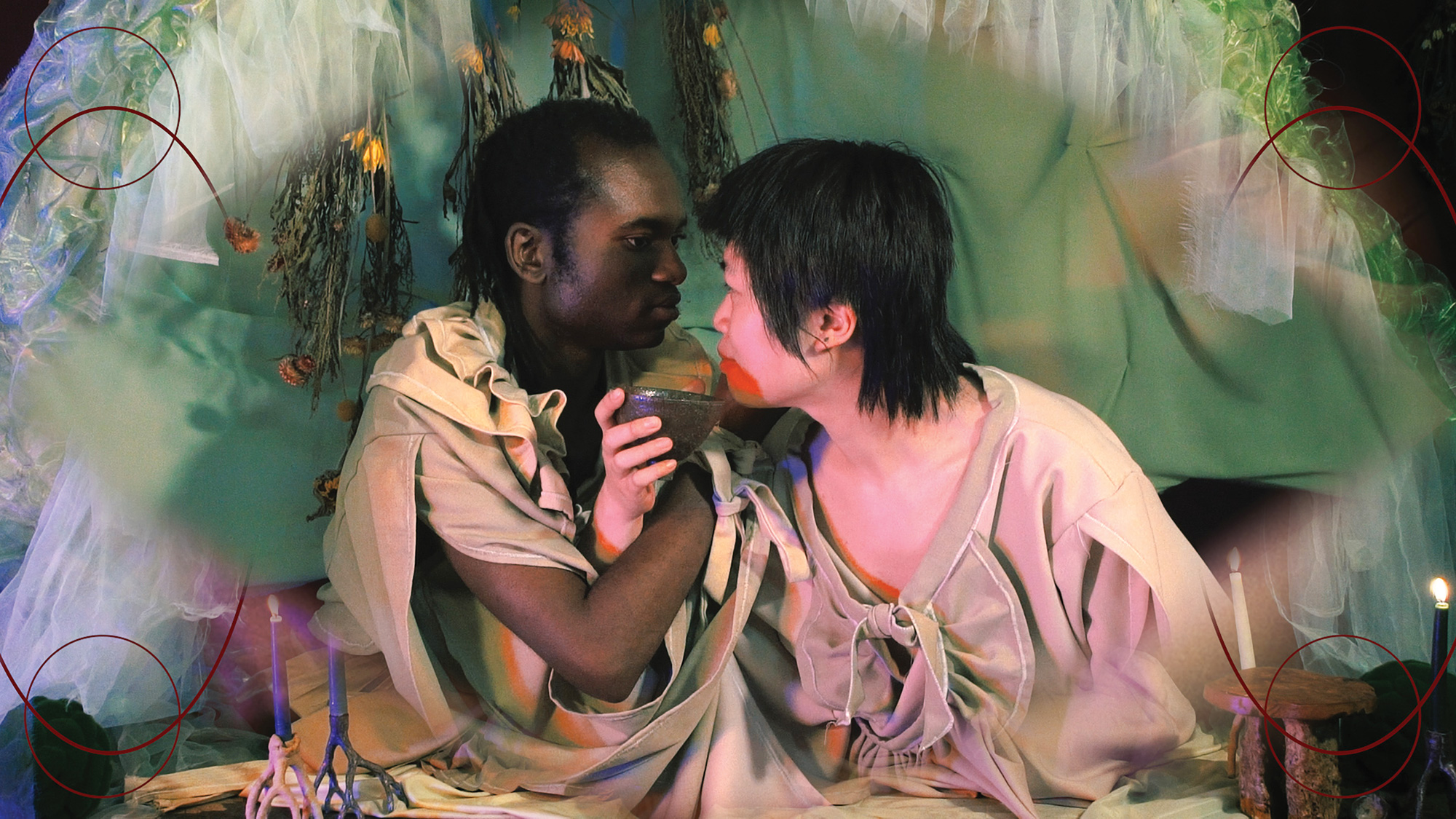New Currents: April Lin 林森
By Nicole M. Nepomuceno

APRIL LIN, (Tending)(to)(Ta), 2021, still from video: 1 hr 6 min 34 sec. Courtesy the artist; and Obsidian Coast, Bradford-on-Avon.
April Lin 林森 composes in multiplicities. The Stockholm-born artist-filmmaker renders, captures, sources, cuts and pastes, reangles, and overlaps images, still and moving; texts, written and spoken; and sounds, organic and otherwise to ruminate on our existence and entanglements. These amalgamated components reflect the saturation and diversity of today’s images (and the common habit of having multiple browser tabs open), enabling Lin’s films and videos to unfold not from a singular, authoritative perspective, but through multiple voices.
A collaboration with ecologist Nalini Nadkarni, Lin’s latest work, TR333 (2021), is a speculative documentary on the spirit of a laboratory-made tree designed as an adaptive response to the climate crisis. Rejecting their assigned scientific name, Cladis (disaster) meliora (better), TR333’s moniker references the pedunculate oak, Mediterranean cypress, and Scots pine, the three tree species on which their parts were based. In dialogue with the viewer, TR333 shares the qualities they have inherited to endure an increasingly brutal environment, their farewells with friends who could no longer adapt, and the bestowed responsibility of existing when many could not. As the film proposes a more nurturing and respectful multispecies co-existence through a more-than-human entity, it also emphasizes understanding oneself beyond the names, identities, and ways of being that have been assigned to us.
Lin’s first solo show at Bradford-on-Avon’s Obsidian Coast art space further deliberated identities beyond pre-established customs and existence beyond survival. Commissioned by Obsidian Coast, (Tending)(to)(Ta) (2021) is a film depicting an exchange between two individuals from different realms, one closer to our reality and the other more idyllic, on their routines. One of these characters introduces to the other Ta, an all-encompassing being, so they can reconnect with themself. In Mandarin, the pronouns for men, women, more-than-human living beings, and non-living things (他, 她, 祂, 它) are all pronounced “ta.” In (Tending), “Ta” is the palm leaves the characters sensually sway with, the tree bark they carefully caress, the almonds, maggots, and streams. “Ta” is also them, us, you, and me.
There is a tenderness in Lin’s treatment of human and nonhuman beings, a care in their words, sounds, and images that encourages one to connect with all that surrounds us.






